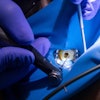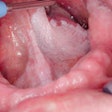Patients taking common biologic agents (BAs) to help treat cancer and other diseases may be at greater risk of needing more dental treatment, according to a study published recently in Oral Diseases.
Furthermore, these patients may be more likely to require both periodontal and restorative treatments, the authors wrote.
"Capturing and reporting dental needs and tolerance of treatment in these patients will allow for a better understanding of how to best and most safely treat this population, improving the service they can receive across dental medicine," wrote the authors, led by Shivani Shah of the University of Pennsylvania School of Dental Medicine (Oral Dis, March 17, 2025).
This retrospective cross-sectional study analyzed 247 adults with adequate dental records who received treatment with one of the three most common classes of BAs, including tumor necrosis factor-alpha (TNF-α) inhibitors, interleukin (IL) inhibitors, or lymphocyte modulators between 2017 and 2022. Data on restorative dental treatments included the number and types of restorations performed annually, they wrote.
Additionally, the decayed, missing, and filled tooth (DMFT) index was recorded for each patient. For periodontal treatments, the frequency of prophylaxes, scaling and root planing, periodontal surgeries, and other related procedures were documented.
During the study period, 72.9% of patients received periodontal treatment. Among them, 58.7% were taking TNF-α inhibitors, 32.6% IL inhibitors, and 11.41% lymphocyte modulators. Compared to the average DMFT scores of the adult U.S. population, both the total study cohort and the restorative patient subgroup had higher DMFT scores, they wrote.
Restorative treatment was provided to 60.3% of patients. Within this group, 91 patients (59.7%) were treated with TNF-α inhibitors, 46 patients (30.9%) with IL inhibitors, and 16 patients (12.1%) with lymphocyte modulators.
However, the study had limitations. As a retrospective study, this research was limited by potential missing or inaccurate data, particularly in demographics, medical history, and medication reporting errors, the authors added.
"This study illustrates the periodontal and restorative treatment experiences of patients taking BAs at one institution, with a majority of patients across classes of BAs requiring both forms of treatment consistently and tolerating them without complication," they wrote.




















